What Is DePIN in Crypto?
DePIN refers to Decentralized Physical Infrastructure Networks, which use blockchains and token rewards to develop physical infrastructure in the real world across fields such as transport, energy, and wireless connectivity.
Key Takeaways
-
DePINs is an acronym for Decentralized Physical Infrastructure Networks. It is a term that connotes projects developing blockchain-based management systems for real-world facilities like marketplaces for computing power and real-world data.
-
DePINs use incentivization systems powered by cryptocurrency to build a reward-based system for providers of crowd-sourced physical infrastructural services while promoting decentralized alternatives for known traditional facilities.
-
The DePIN concept has a versatile scope and stretches through a handful of vital operational systems in industrial and everyday aspects.
-
Projects like IoTEX, Helium, Hivemapper, and Natix network are making significant attempts in this area and DePIN is maturing into a notable sector in the crypto space

Various centralized digital platforms utilize the power of community to build a web of resources for millions of users. An example of this is ride-sharing services like Uber. Uber drivers contribute physical resources (vehicles) and services (chauffeuring) and get paid for these services while the platform makes these services available to a wide user base.
Centralized systems like this use fiat-based rewards or volunteer perks like wider visibility to lure providers while they maintain control of the providers’ resources (at least while they are active on the platform). Providers also go through delineated processes to gain membership; this also applies to users.
Blockchain-based projects are developing solutions and improvements to this system. Projects like this claim to offer providers a better way to get involved in public service provision and also claim to offer flexible and higher rewards for these services. These projects are known as DePIN and could shake up the service-based sector in the future. So, what is DePIN?
Understanding Decentralized Physical Infrastructure Networks (DePIN) in Crypto
DePIN is simply a decentralized version of the system described above. It is an acronym for Decentralized Physical Infrastructure Network. A DePIN is a network of crowd-sourced providers offering certain real-world services to users and leveraging a public ledger (blockchain) to keep a record of the services rendered and also receive remitted rewards for these services via cryptocurrencies that run on the same or a different blockchain network.
For DePINs, the blockchain is an administrational, remittance, and record-keeping facility. As an administrational facility, DePINs design a permissionless system for providers and users via the blockchain; anyone can provide the required services as long as they have sufficient resources. As a remittance facility, users obtain the services through blockchain-powered solutions and providers also receive their rewards in cryptocurrencies. As a record-keeping facility, details of every action are recorded on the ledger, which is usually available for public view.
DePINs are versatile. Their application spreads across different sectors, ranging from crowd-sourced geographical services to advanced infrastructural marketplaces operating completely on the blockchain.
DePIN Categories
DePINs are classified into two broad categories;
Physical Resource Networks (PRNs) and Digital Resource Networks (DRNs).
PRNs are location-based decentralized physical resource networks. Providers in the network contribute hardware resources related to connectivity, mobility, energy, and similar sectors to offer services. These resources are location-based and non-fungible in the sense that the services are localized (set to a place) and sometimes non-portable (fixed to a specific location).
DRNs are networks of fungible digital resource providers. Providers contribute resources like computing power, shared bandwidth, or storage facilities. These resources are not set to a location or related to locational data.
DePIN is stretching the boundaries and connecting blockchain and the real world in a way we have never seen before. Here’s the basis of how this works
How Does DePIN Work?
DePIN creates a connection between physical facilities and the blockchain. For a simple explanation, the major role players are a physical facility controlled by a provider, a middleware connecting the facility to the blockchain, and a public ledger that manages this connection for remittance. Here’s how this works in detail:
Physical infrastructure: The physical facility could be anything from a sensor, or internet router to a solar panel. This is managed by a private provider. Sometimes these providers already own these facilities prior to partaking in the DePIN project. Imagine a PoW (Proof of Work) blockchain network where miners contribute computing power to protect the network. As many private providers as possible can contribute their facility to a DePIN.
Middleware: The middleware handles the bulk of the connection between the blockchain and the physical infrastructure. Like a decentralized oracle network (DON) that picks up data from the outside world and communicates them to a blockchain application. The middleware performs a similar role. The middleware gathers data on activities on each of the private facilities and relays them to the DePI Network.
Blockchain system: Data gathered by the middleware are sent to the blockchain which serves as an administrator and a remittance system for the providers and the users. Based on data provided by the middleware, the blockchain rations demand across the providers and computes the rewards based on these activities. Rewards are sent in cryptocurrencies. On the user's end, the blockchain also handles resource procurement, where the pricing models are integrated into the remittance system and users are charged promptly for each service they utilize.
The DePIN Flywheel

DePINs hope to grow a resource-efficient physical infrastructure through incentivization. First, providers are incentivized to commit their physical facilities to a decentralized network. In pursuit of rewards, a good number of providers, some of whom might have these facilities lying dormant, commit their facilities to the network. DePIN makes these resources available on the user side. The network generates revenue through fees paid by the users.
Users are also attracted by the cheaper service charges, relative to corporation-owned facilities. As the network grows, the native token grows in value, meaning more rewards for providers and higher attraction for investors, and even more providers. As the cycle continues and the network grows, the DePIN flywheel takes off.
What Are the Benefits of Decentralized Physical Infrastructure Networks (DePIN)?
While this might not be exhaustive, here are some of the advantages of DePIN;
Horizontal Scalability
DePIN allows facilities to grow their capability in a more flexible manner. Networks can increase resources instead of increasing the capacity of each resource. This allows a good level of flexibility and facilities built using this system can easily scale in and out depending on the demand. The blockchain can control the available resources and ration demands.
In a low-demand scenario, certain providers could experience a lower workload. In high-demand scenarios, the network can re-activate dormant resources adding more instances and increasing the overall network capacity without any shifts. Depending on the available dormant resources and rationing system of the DePIN, systems like this can scale infinitely.
Community Control – Decentralization
DePIN, like DeFi, is decentralizing infrastructural systems, moving from corporations to a collective of individuals committing their resources to build a facility. This system distributes the facility’s control to the different providers – this is similar to miners in a PoW network. DePINs are a sort of industrial DAO where everyone in the system contributes resources and has control relative to their capacity. In a system where every provider has equal capacity, the DePIN becomes an (almost) perfectly decentralized system.
Fair Pricing
DePIN pricing models are relatively different from the traditional facilities. Factors that contribute to the pricing model include the cost incurred by the private providers to run their individual facilities and other network-related factors. Additional charges from the platform could be lesser as the platform itself incurs no cost to provide these facilities.
Overall, the pricing model of DePINs is expected to be cheaper, with the expectation that the pricing will be fair as it considers basic factors without unfair price bloating which is usually associated with facilities operated by centralized institutions. For a system powered by people, DePINs are also more likely to consider affordability in their pricing model than corporations.
Cost-efficient Operation
The DePI network spends little or no cost to bring the network to life; the providers have a good level of flexibility as regards the services they provide. For instance, a provider can commit their facility to multiple networks. Users also pay a fair price for the services they obtain from the network. DePINs are designed to deliver the best possible service for the least possible cost, offering a cost-efficient system.
Permissionless
Anyone can contribute their resources to a DePIN. On the user side, anyone can also obtain the services offered by a DePIN. There is no bargaining around price or user screening for each of these. Once a provider has the required infrastructure, they can run a provider-side account on a DePIN, just like anyone can deploy a liquidity pool on a DEX or obtain a loan from a money market without hassles.
Incentivization
Incentivization is a great tool for DePINs. For the providers, they offer a passive or active income opportunity depending on how the DePIN operates. Individuals can also build an income stream primarily from DePINs. Projects like Nunet hope to reduce the amount of dormant computing resources through its AI-powered marketplace for computing power. Providers earn an income from their facilities which originally would be lying dormant.
What Are the Challenges Facing DePIN?
DePIN is an emerging concept and has shown promise on paper and in early prototypes, but a few factors might limit its progression, these factors include;
Adoption Stage and Impact on Revenue
The DePIN flywheel is dependent on the progress of the network, this reflects on the token’s value and the urge for investors and providers to partake in the network. At the current stage, DePIN is still new, and only a small percentage of blockchain enthusiasts and facility owners are currently interested in being a part of such systems. While this is likely to change in the future, the DePIN concept faces a significant challenge in designing a system that attracts a sufficient number of providers and users to power the network and the flywheel.
Technological Complications
DePIN as a concept could be hard to grasp. For enthusiasts who wish to take part in this sector, the technical aspects could be daunting, at least at the beginning. Projects in this area will need an increased effort in educating individuals at different levels.
Cost of Running Private Facilities
The routine operation of some facilities could incur significant costs. This could be challenging for some providers as private setups are less likely to obtain external financial support.
Profitability
For a DePIN to attract providers, it must be able to remit rewards that are at least equal to the running cost while remaining profitable. The appeal is directly proportional to the percentage profit for each running cycle. At this stage, DePINs could struggle to remit attractive rewards as the user and provider sides are still low in density.
DePIN Sectors and DePIN Crypto Projects
Here are the sectors where some DePIN projects operate;
Wireless
DePIN in the wireless sector is focused on developing decentralized connectivity-sharing platforms for IoT and cellular devices. Projects like these incentivize providers for the connectivity resources committed to the network using cryptocurrencies. The middleware computes data on connectivity resources and rewards providers according to services rendered to devices connecting via the network.

Wireless DePIN projects like Helium are focused on taking a share of connectivity services from large network providers. Helium operates a multi-token system with each token in the ecosystem serving a purpose in the provision of network resources and rewarding providers. The HNT token is burnt by users to obtain connectivity services while the MOBILE token powers the Helium 5G project. 5G hotspot bundle owners provide network coverage and earn the MOBILE token.
Geospatial
Locational services are another niche for DePINs. PRNs incentivize providers to offer physical locational services, in turn, be rewarded with native cryptocurrencies. Projects like these operate using sensors or community contributors who supply locational data to the network and the network computes these data to provide services such as area mapping.
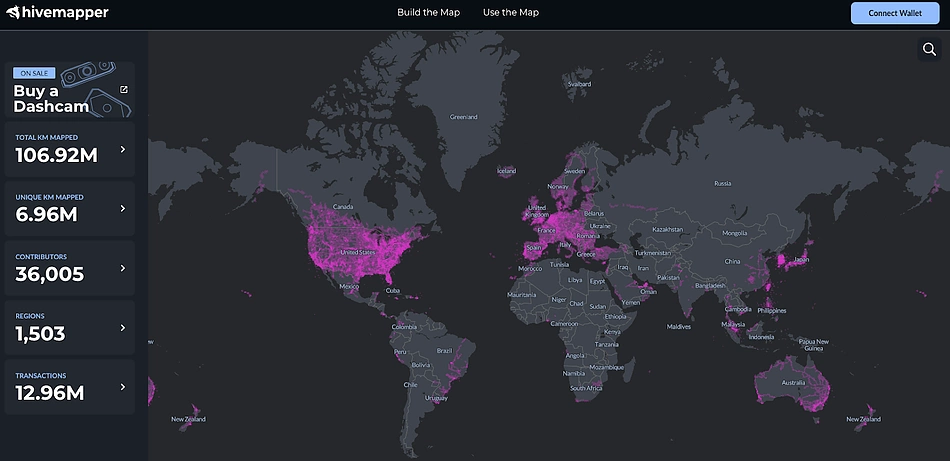
Projects like Hivemapper are building a crowd-sourced map using efforts from its community. Contributors can provide manual mapping resources or use Hivemapper’s dashcam. Users can install the dashcam on their vehicles and enable the network to read locational data as they move around with the device. These contributors are rewarded with the HONEY token relative to the areas covered.
Mobility
Cars and other vehicles have improved the way people move greatly. However, apart from infrastructural developments in car technology, not much has been done as regards how car owners manage their cars and how much extra value they obtain from their cars. Mobility DePIN projects are designing newer ways to manage vehicles, collaborate with other vehicle owners and companies, and earn rewards while doing so.

An instance is DIMO, DIMO stands for Digital Infrastructure for Moving Objects. It is a mobility project focused on data management for car owners and manufacturing companies. Services under its hood include a special identity system for vehicles via NFTs, data availability on cars, and other information that allows car owners to make better decisions. Car owners can download the DIMO application and earn rewards in DIMO tokens while they provide this data.
Health
Fitness applications promote healthy lifestyles. FitFi made a short-lived wave a while ago, applications like these reward users for completing certain fitness quests as a way of promoting healthy lifestyles. While these applications are making waves like they used to, DePIN projects in this sector are operating using a similar design.

Applications like Healthblocks reward users for providing certain health-related information to enable healthcare companies and workers to make advancements. Users can also connect their fitness devices to the application to track their fitness goals. Users are rewarded in HEALTH tokens for completing a quest or providing data.
Energy
DePIN projects in the energy sector claim to promote green energy generation by connecting renewable energy providers to companies leveraging such energy sources. These projects promote the collation of reliable energy supply data and the utilization of these data to develop environment-friendly energy practices.
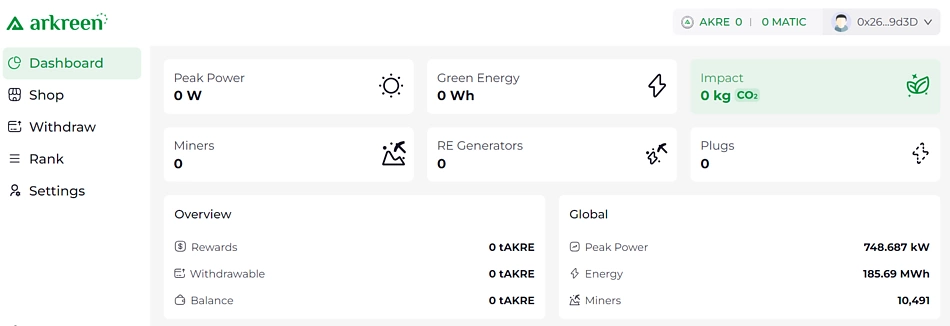
Arkreen, a green energy decentralized project, is incentivizing green energy providers to provide data on their energy plants. Data that can be provided includes the capacity of their solar energy setup and other similar data. The demand side for such an application includes Renewable Energy Certification (REC) issuers and green computation operators who access the electricity data and build applications and services using these data.
Storage Networks
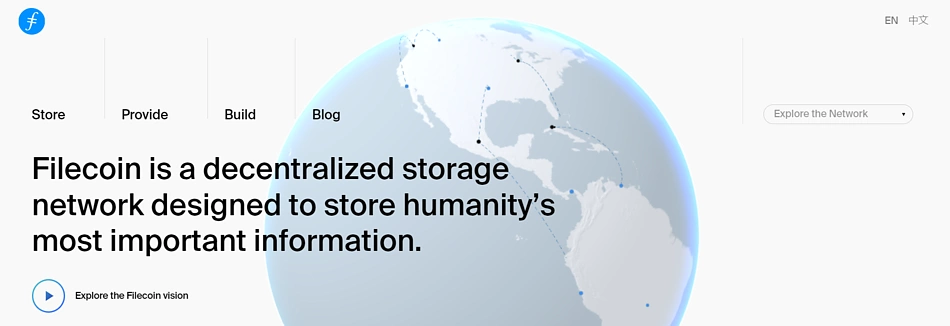
Decentralized storage networks provide users with on-demand storage space by incentivizing providers to contribute storage space. Projects like Filecoin claim to be working towards making the web more secure and efficient with a decentralized data storage marketplace, protocol, and cryptocurrency. The Filecoin blockchain keeps a record of the storage space contributed by each provider and rewards contributors in Filecoin while users pay a fee to lend storage spaces and securely store their data and files.
Compute Networks
Decentralized compute networks offer retail computing infrastructure to users by pooling private computer resource providers to commit dormant resources to the network. They develop a marketplace for computing resources and incentivize providers.
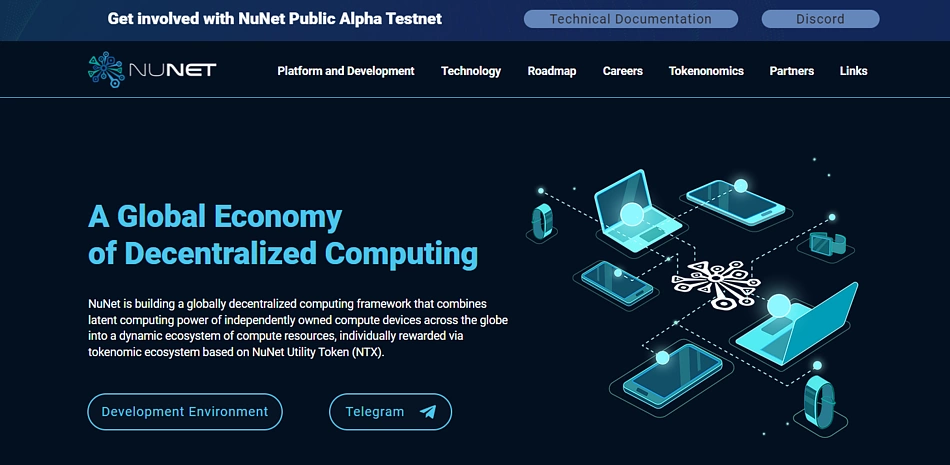
An example of a DePIN project is Nunet. Nunet is an AI-powered marketplace for computing resources. It claims to promote a resource-efficient atmosphere for companies by making dormant computing resources available to anyone. Computing resource providers are rewarded in NTX tokens for contributing to the marketplace. Companies and individuals can borrow available computing power and pay a fee.
Bandwidth Networks
Decentralized bandwidth networks aim to optimize content delivery and lower the cost of content delivery by incentivizing private providers to share their bandwidths. By doing this it enables existing video and media platforms to drive incremental revenues while users pay a cheaper fee to leverage this shared bandwidth and deliver better-quality multimedia.

A project in this area is Theta Network. Theta is an EVM-compatible network; it consists of a blockchain network and an Edge network. The blockchain arm of Theta handles the financial remittance and smart contracts while the Edge network handles the storage and delivery of media assets. Bandwidth providers earn rewards in THETA tokens, and bandwidths can be shared on mobile, PC, and other devices.
Final Thoughts
DePINs democratizes software and hardware infrastructures and sheds light on facility-building in a community-based fashion where everyone gets to contribute and get rewarded. Theoretically and even in practice, it demonstrates the power of community, cryptocurrency, and blockchain technology. While it is not certain if its financial advantages are complete, it has shown signs of being a pocket-friendly approach to developing infrastructures. This applies to users, providers, and the project itself. For the project, everyone contributes and saves the project team a substantial amount. Providers earn passive or active financial rewards to the tone of their contributions. For users, community-based systems are more likely to adopt a pricing model that is modified to suit the purchasing power of the users.
On technological grounds, DePINs could be the next stage in the evolution of commercial-level facilities, software, and hardware. Current systems are grossly centralized and corporations have the upper hand in the administration of vital routine facilities. DePINs could change this positively and return control to a distributed network of providers and users, a sort of industrial class DAO. This has been shown by current DePIN prototypes. Remitting rewards in cryptocurrencies also pushes the adoption of a sleeker payment system. Cryptocurrencies are inherently suitable for systems like this.
Having said this, it is important to bear in mind that while this has shown potential, there could be certain disadvantages, some of which are yet to be known due to the current stage of development. It is also important to note that these systems are pretty young and just like any other new technology, they could be prone to rapid changes and some of these changes might not appeal to users. It is also important to understand how some of these protocols interact with you as a provider or a user. Also keep in mind that foul players could also utilize systems like these. Generally, proper personal research is advised.
Note that this article discusses DePIN on technological grounds only and is not financial advice. Featured projects are not endorsed by CoinGecko and users should always do their own research before investing in any cryptocurrencies or projects.

Joel is deeply interested in the technologies behind cryptocurrencies and blockchain networks. In his over 7 years of involvement in the space, he helps startups build a stronger internet presence through written content. Follow the author on Twitter @agboifesinachi



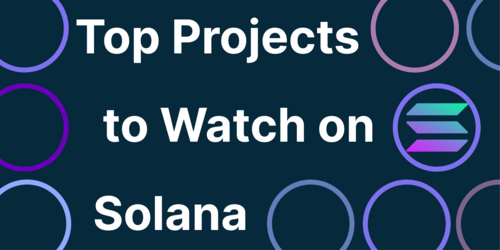





 Or check it out in the app stores
Or check it out in the app stores